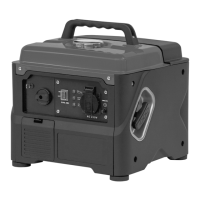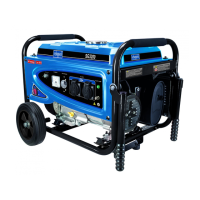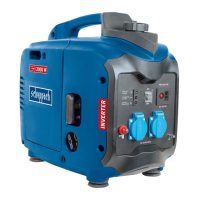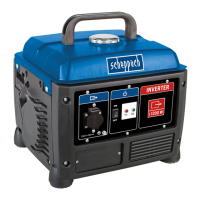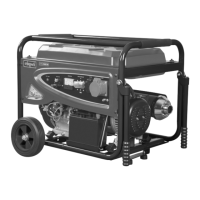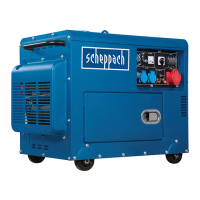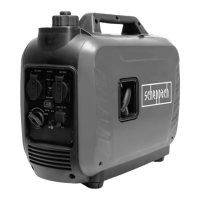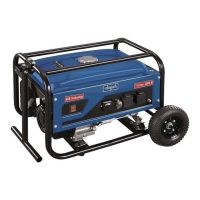www.scheppach.com
GB
|
37
11. Storage
1. Perform all general maintenance, which are in the User’s Guide in the Maintenance section.
2. Let the fuel out of the tank (Use a commercially plastic fuel pump from the hardware store).
3. After the fuel is drained, start the machine.
4. Let the machine in idle speed running until it stops. That cleans the carburetor from the remaining
fuel.
5. Let the machine cool down. (about 5 minutes)
6. Remove the spark plug.
7. Fill a small amount of 2-stroke engine oil into the ring chamber. Pull out several times the starter
cord gently to wet the internal components with the oil.
8. Replace the spark plug.
9. Clean the outer casing of the machine.
10. Keep the machine on a cold, dry place out of reach of ignition sources and ammable substanc-
es.
Recommissioning
1. Remove the spark plug.
2. Pull the starter rope out several times. It cleans the ring chamber of oil residues.
3. Clean the spark plug contacts or install a new spark plug.
4. Fill the tank.
12. Transport
m WARNING
Let the engine cool down before transporting the machine or storing indoors to avoid burns or re
hazards.
If you want to transport the unit empty the fuel tank before. Clean the unit with a brush or a broom
of coarse dirt.
13. Disposal and recycling
The equipment is supplied in packaging to prevent it from being damaged in transit. The raw ma-
terials in this packaging can be reused or recycled. The equipment and its accessories are made
of various types of material, such as metal and plastic. Defective components must be disposed
of as special waste. Ask your dealer or your local council.
Old devices must not be disposed of with household waste!
This symbol indicates that this product must not be disposed of together with domestic waste
in compliance with the Directive (2012/19/EU) pertaining to waste electrical and electronic
equipment (WEEE). This product must be disposed of at a designated collection point. This
can occur, for example, by handing it in at an authorised collecting point for the recycling of
waste electrical and electronic equipment. Improper handling of waste equipment may have neg-
ative consequences for the environment and human health due to potentially hazardous substanc-
es that are often contained in electrical and electronic equipment. By properly disposing of this
product, you are also contributing to the eective use of natural resources. You can obtain infor-
mation on collection points for waste equipment from your municipal administration, public waste
disposal authority, an authorised body for the disposal of waste electrical and electronic equipment
or your waste disposal company.
